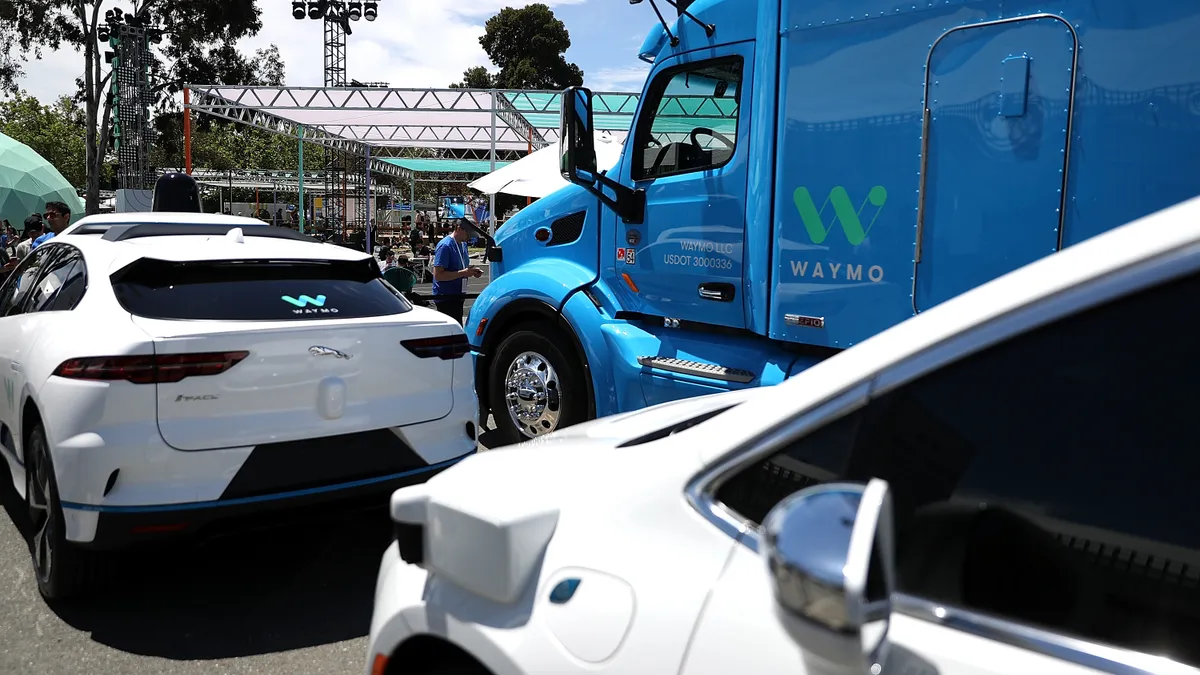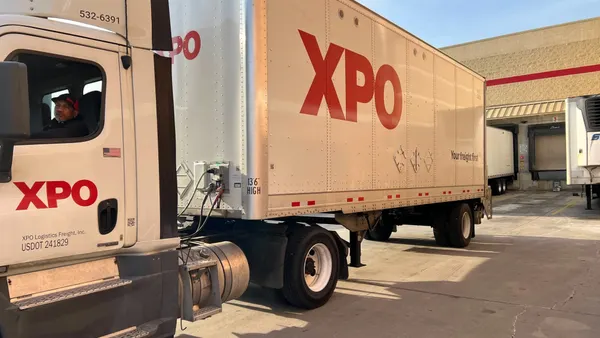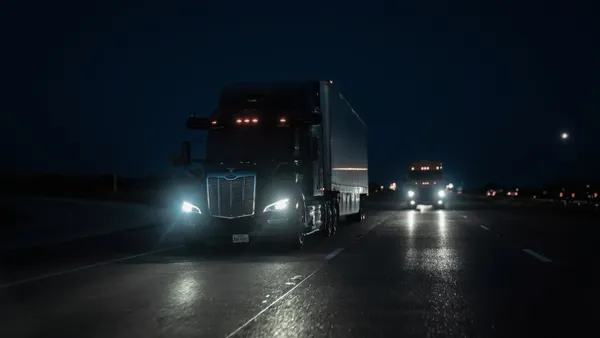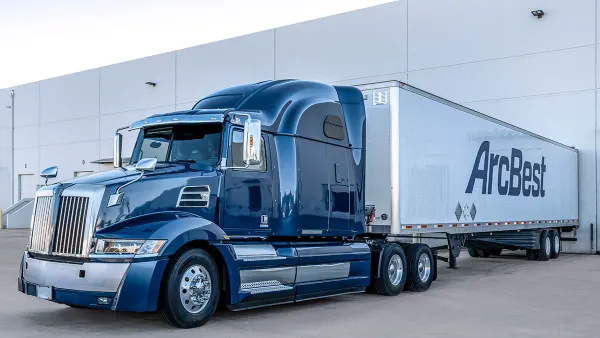Dive Brief:
- J.B. Hunt and Waymo plan to test autonomous Class 8 trucks in Texas, according to an announcement Thursday. The trucks are set to haul freight between Houston and Fort Worth along Interstate 45 for "one of J.B. Hunt's leading customers," which was not named.
- "While we believe there will be a need for highly skilled, professional drivers for many years to come, it is important for J.B. Hunt as an industry leader to be involved early in the development of advanced autonomous technologies and driving systems to ensure that their implementation will improve efficiency while enhancing safety," Craig Harper, chief sustainability officer and executive vice president at J.B. Hunt, said in the announcement.
- Also on Thursday, Locomation announced flatbed carrier PGT Trucking signed an eight-year agreement to deploy 1,000 Autonomous Relay Convoy, or ARC, systems on more than 30 routes. Locomation's convoy system enables platooning.
Dive Insight:
The momentum propelling autonomous trucking creates an environment in which large fleets are comfortable taking big bets on driverless operations.
One of the early examples of this trend is TuSimple, which raised more than $1 billion in its initial public offering. Penske, Schneider and U.S. Xpress signed equipment reservations, and the technology-maker also announced in May it had hauled produce autonomously for more than 900 miles, in partnership with The Giumarra Companies and the Associated Wholesale Grocers.
"Autonomous trucking technology is a real game-changer for us, as its time and cost efficiencies provide us with an enhanced opportunity to supply fresher fruits and vegetables across the United States, particularly to food deserts and rural communities," Tim Riley, president of the Giumarra Companies, said in a press release about the operation.
Efficiency, along with increased safety, is a commonly touted benefit of driverless trucks. But not every operation will get the most out of an autonomous vehicle — at least not in the current iteration of the technology. TuSimple sees its systems working mostly in the middle mile, which is where the autonomous, 900-mile haul took place.
Middle-mile routes are some of the most difficult for which to hire drivers. Home time is becoming more of a priority for drivers, which makes regional hauls more attractive. In that way, autonomous trucks could help ease the squeeze of the driver shortage.
For operators, OTR is also an area that could stand to become more efficient with computers. They could keep more consistent speeds and institute more efficient braking and other driving techniques. Plus, computers don't need to stop to sleep or eat.
Çetin Meriçli, Locomation's co-founder and CEO, said in the press release its ARC system was designed to run in "long-established trucking routes and systems." High-value, repetitious lanes are also what TuSimple is targeting.
"Part of PGT's mission is to grow innovatively by improving efficiencies through the use of technology," said Gregg Troian, president of PGT Trucking. "We expect this technology to significantly reduce costs and improve freight efficiency, as well as save energy and improve safety."
Locomation is working with PGT routes the tech-maker called ARC routes. They're engineered by Locomation to maximize HOS, equipment and load profitability. When using the convoy technology, a driver pilots a lead truck equipped with a technology suite as another truck follows autonomously. There is a driver in the second truck, but it can log off and rest while the truck is in motion, Locomation said.
Partnerships between fleets and OEMs are a tried and true method to getting new equipment to market. It becomes all the more important with disruptive technology. Tests, pilots and demonstrators are mechanisms for collecting data and feedback.
"It's companies and relationships like these that will make this technology a commercial reality in the coming years," Charlie Jatt, head of commercialization for trucking at Waymo, said in a press release.











